Fix: Web Pages not Loading on Windows
Sometimes when you try to use your browser to access websites, the web pages don’t respond even if your system is connected to an internet connection. This often occurs when users upgrade to Windows 10 or it can occur out of the blue due to some obvious reasons, that are mentioned below. This can be really frustrating and confusing as your machine has an internet connection but still isn’t able to reach websites.
This issue was mostly reported on Windows 10, however, there have been reports that it occurred to some users back in the time of Windows 7 etc. The issue is not huge and the obstacle can be easily overcome by applying a few simple solutions which are mentioned in this article.
What causes Web Pages to not Respond on Windows 10?
Well, this can be due to a number of factors and from what we have salvaged, it usually occurs due to:
- Third-party software. In some cases, the problem can be caused by the third-party software that you have installed on your machine which is interfering with your network settings.
- Outdated Network drivers. If your network drivers are outdated and you haven’t installed the latest drivers for your network adapter, it can cause the issue.
- Incorrect MTU. Sometimes a new Windows 10 installation can set the wrong MTU due to which the issue is caused.
To solve your problem, you can use the following workarounds:
Solution 1: Run Network Troubleshooter
To start off, you should run the Windows Internet Connection troubleshooter before doing anything else. The troubleshooter can potentially detect driver related or any other issue which is causing the problem and fix it. Therefore, running the Network troubleshooter deserves a shot. Here’s how:
- Open Settings by pressing Winkey + I.
- Go to Update and Security.
- Switch to the Troubleshoot tab on the left-hand side.
- Select ‘Internet Connections’ and click ‘Run the troubleshooter’.
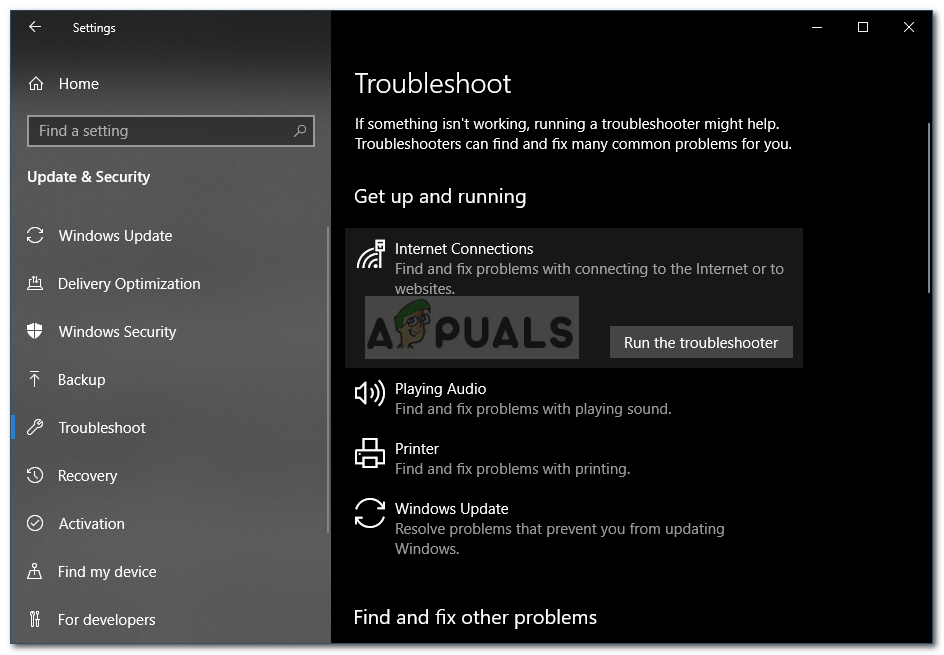
Windows Network Troubleshooter
Solution 2: Resetting TCP/IP
Transmission Control Protocol, also known as TCP, is responsible for establishing a connection between two hosts i.e your machine and the server. Sometimes, the issue can be due to malfunctioning TCP/IP settings in which case you’ll have to reset it. Here’s how to do it:
- Press Windows Key + X and select Command Prompt (Admin) from the list to open an elevated command prompt.
- Type in the following command:
netsh int ip reset resetlog.txt
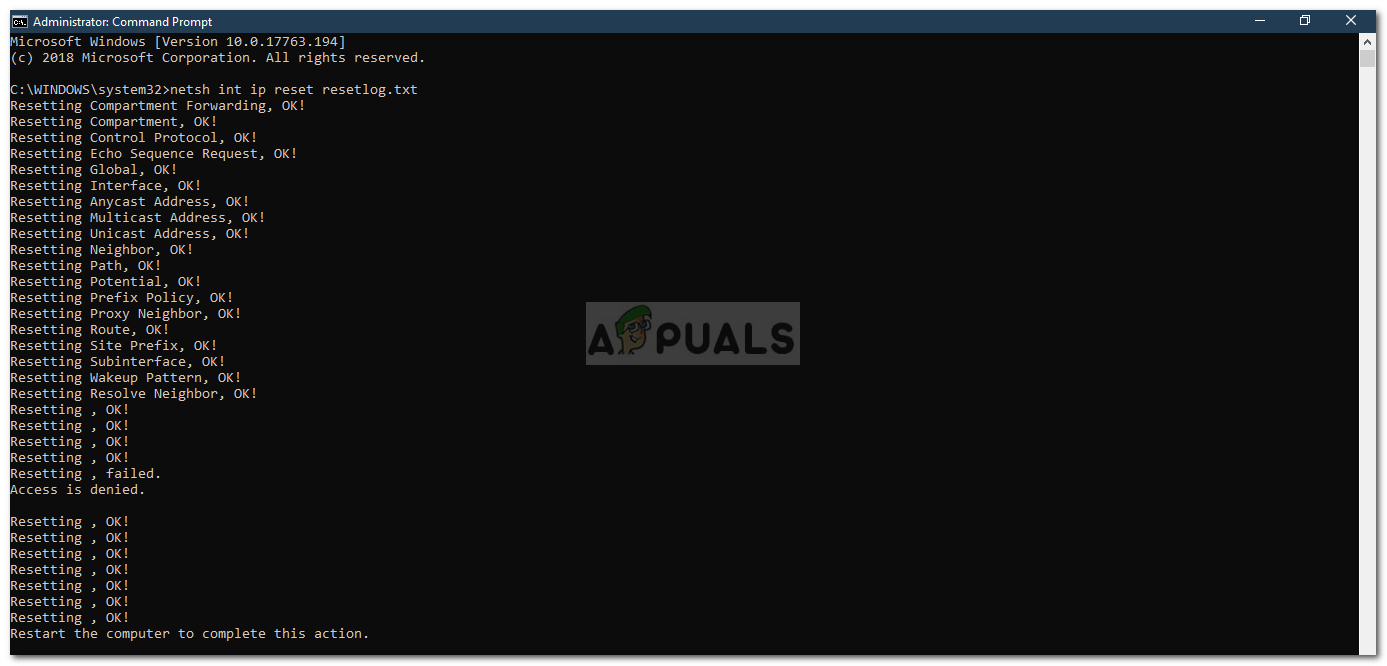
Resetting TCP/IP - After you’ve executed the above command, enter the following commands:
netsh winsock reset catalog
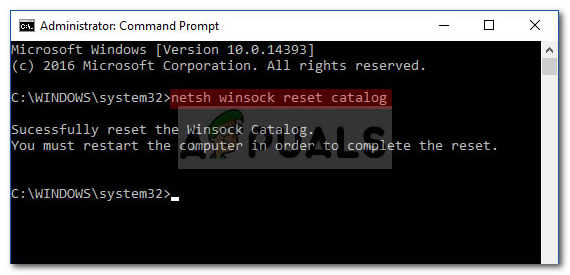
Resetting Winsock netsh int ip reset reset.log hit
- Reboot your system and try accessing a website.
Solution 3: Update your Network Drivers
Another way to resolve your issue would be to update your Network drivers. If your network drivers are outdated, it can cause the issue in which case you’ll have to update it to the latest version. Here’s how:
- Go to Start Menu, type in Device Manager and open it up.
- Expand the Network Adapters list.
- Right-click on your network adapter driver and select ‘Update driver’.
- Click ‘Search automatically for updated driver software’.
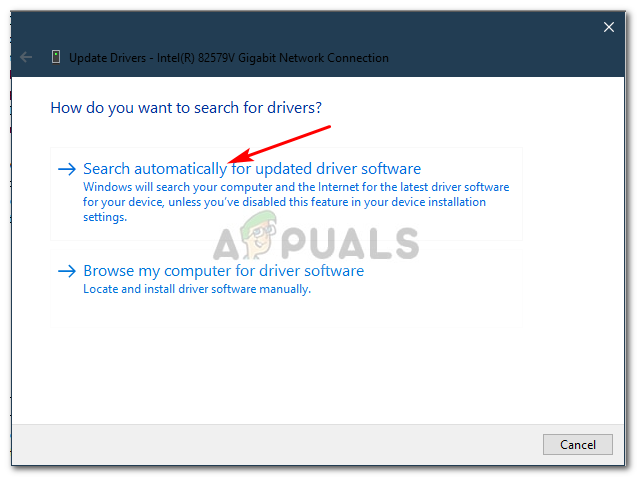
Updating Network Driver - Wait for it to complete.
- Restart your machine and try to load a web page.
Solution 4: Uninstall Third-party Software
Some users have reported that their issue was occurring due to the third-party software installed on their system. Uninstalling the software seems to have fixed the issue, therefore, make sure to uninstall any third-party software like your antivirus etc. Once you have uninstalled the software, restart your system and then check if it has fixed your problem.
If you are confused about uninstalling the apps that are installed on your system, we have an alternate solution for you. You can try performing a Safe Boot and then try to access a web page. Safe Boot loads up your system using the most limited set of files or drivers.
You can learn how to perform a Safe Boot here.
Solution 5: Changing MTU
There have been reports stating that the issue was caused due to wrong MTU value set by Windows 10. Maximum Transmission Unit or MTU is the largest amount of packet that is allowed to be sent over a transmission. Sometimes, Windows 10 sets MTU to 1500 which can cause the problem and needs to be changed to 1432. Here’s how to change it:
- First of all, download TCP Optimizer tool from here.
- Once the tool has been downloaded, right-click on it and select ‘Run as an administrator’.
- In the bottom, select ‘Custom’ in front of ‘Choose settings’.
- Then, change the MTU value to 1432.
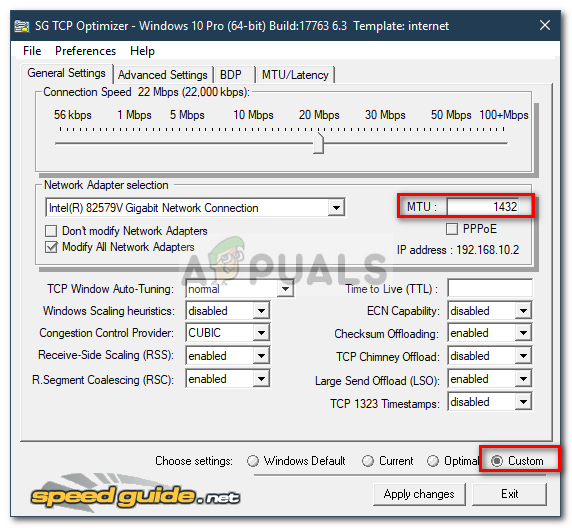
Changing the MTU Value in TCP Optimizer - Hit ‘Apply changes’.
- Reboot your system and your problem should be fixed.




